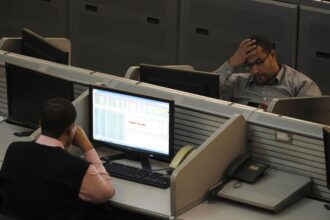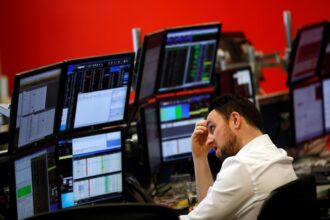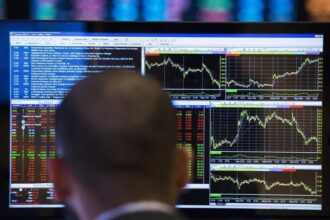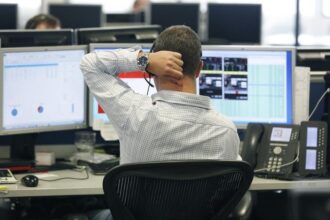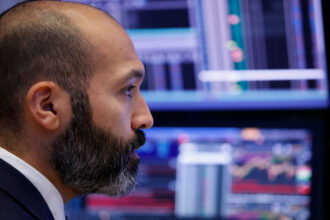© Reuters. FILE PHOTO: Passersby are reflected on an electric stock quotation board outside a brokerage in Tokyo, Japan April 18, 2023. REUTERS/Issei Kato/File Photo
By Koh Gui Qing and Naomi Rovnick
LONDON/NEW YORK (Reuters) – Global stocks traded in a narrow range on Monday as the market focused on U.S. inflation data for more clues on whether global interest rates really have peaked.
After two weeks of gains, MSCI’s gauge of global equities whipsawed between modest gains and losses, and finished up 0.19%. Wall Street’s benchmark share index was flat, the Dow Jones Industrial Index was up 0.16%, while the lost 0.22%.
The index for world equities has gained almost 5% so far this month, after risk aversion in October caused by the Israel-Hamas war was soothed by bets that major central banks have ended their lengthy run of interest rate hikes.
Still, the week ahead is packed with market risk events, with consumer inflation and retail sales figures from the United States on Tuesday and Wednesday, respectively, the most likely to shift the economic narrative.
“Top of mind this week will be Tuesday’s October Consumer Price Index report where we are looking for core inflation to have gained additional speed for a third straight month,” analysts at TD Securities said in a note. They forecast core inflation to have accelerated to 0.4% from 0.3% in September.
Economists polled by Reuters expect headline U.S. consumer price inflation slowed to 3.3% in October from 3.7% the month before, with the so-called core inflation rate that strips out volatile components unchanged.
“While a continuation of the (stocks) rally into year-end is definitely possible, it may be muted by bearish equity sentiment driven by both heightened geopolitical and financial market risk,” research house BCA also cautioned in a note to clients on Monday.
That combination of rate hike worries and risk aversion helped send the dollar to a fresh one-year high against the yen on Monday.
Benchmark 10-year Treasury yields, which rise when prices fall, also touched a one-week high of 4.6960% early Monday, as concerns about inflation reduced the appeal of fixed interest-paying debt instruments.
Moody’s (NYSE:) cut its U.S. AAA credit rating outlook to “negative” from “stable” on Friday, citing large fiscal deficits and a decline in debt affordability. Fitch downgraded the United States to AA+ from AAA in August after months of political brinkmanship around the U.S. debt ceiling.
The U.S. faces another partial government shutdown beginning Saturday if Congress does not pass a stopgap spending bill.
The dollar hit 151.90 yen on Monday for the first time since mid-October last year, and was still hovering at 151.59 near those highs at 2110 GMT. The , which tracks the U.S. currency against six others, was flat at 105.61, within distance of its year-to-date high reached Oct. 3.
Nomura Securities strategist Naka Matsuzawa said global equities were now likely close to a peak.
“Up until now, the market has been taking bad economic news as good news, because that would mean a pause in Fed rate hikes,” he said.
“But now, the Treasury market has already priced in a pause, so there’s not much room for Treasury yields to fall further,” removing a support for the stock market. “In short, I don’t think the stock market rally is going to continue.”
Adding to short-term market tensions, U.S. President Joe Biden and Chinese leader Xi Jinping will meet this week on the sidelines of an Asia-Pacific Economic Cooperation (APEC) summit in San Francisco.
prices also eased as demand worries trumped supply concerns ahead of Chinese retail sales data later in the week that may darken an outlook already dimmed by declining industrial activity in the world’s second-largest economy. [O/R]
futures for January and U.S. West Texas Intermediate (WTI) crude futures for December edged higher, both up around $1.30 at $82.75 and $78.53 a barrel.
Both benchmarks gained nearly 2% on Friday as Iraq voiced support for oil cuts by OPEC+.
Read the full article here





